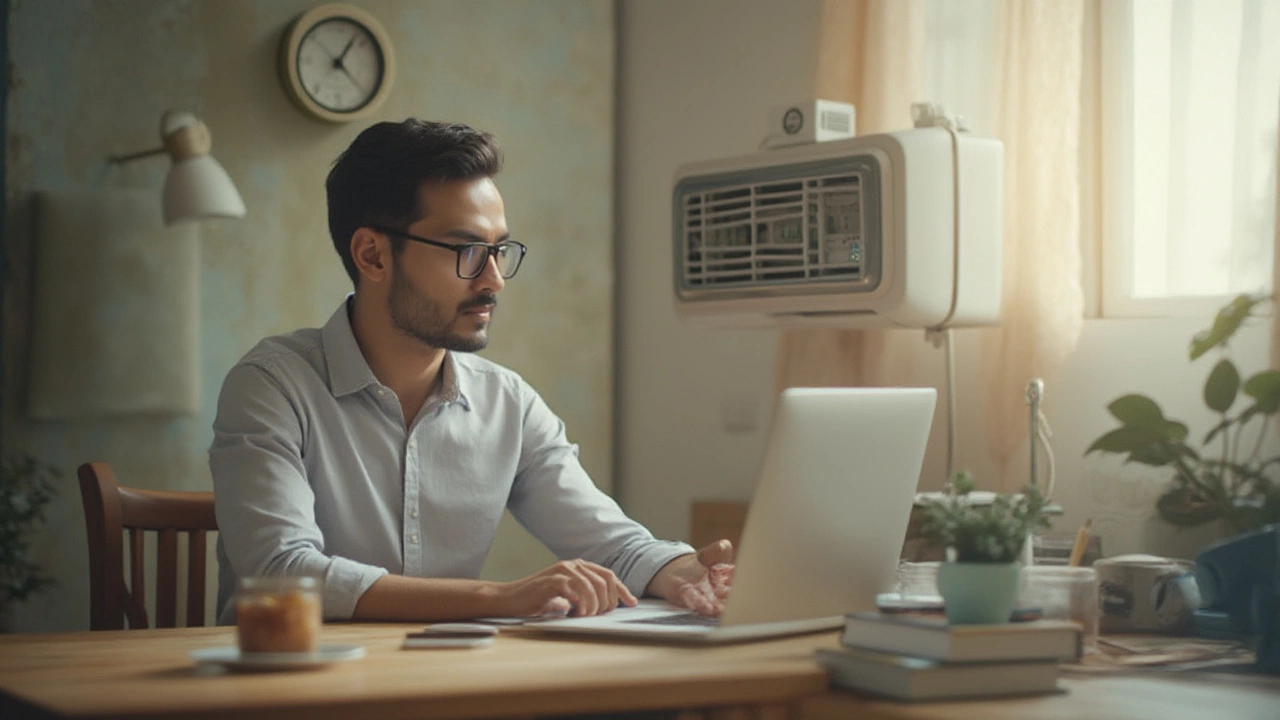
Ever walked into your place on a hot July afternoon, eager for a blast of cold air—only to get hit with an electricity bill that makes your jaw drop? That’s the bittersweet dance with portable air conditioners. They promise sweet relief, but if you don’t use them wisely, your bank account starts to sizzle, too. The trick? Knowing how many hours to actually run the thing each day. It sounds simple, but there’s a world of difference between leaving your AC on all day while nobody’s home and timing it just right so you’re cool and comfortable without burning through cash. Whether you live in a stuffy studio or a sun-baked apartment, figuring out the perfect balance means knowing your space, adjusting for weather, and, let’s be honest, sometimes just learning from hard experience.
What Actually Determines How Many Hours Your Portable AC Should Run?
There’s no single “one-size-fits-all” answer, because portable air conditioners—like roommates and WiFi signals—act differently depending on a handful of factors. Square footage, insulation, climate, outside temperature, and even how many electronics heat up the room all make a difference. If you live in Phoenix, 110°F outside means your portable AC will need to put up a serious fight—running it for only a couple hours just won’t cut it. But in a shaded Seattle basement, you can probably get away with just a few hours here and there.
Let’s get specific. Most portable ACs are designed to cool bedrooms, small living spaces, or offices—usually up to about 400 square feet. Manufacturers recommend using these units for 8 to 12 hours per day during peak summer. But here’s where real life steps in: if your apartment is poorly insulated, has big windows facing the sun, or your landlord thinks “weatherproofing” is a myth, you’ll need more runtime. On the other hand, if you have blackout curtains, good insulation, and you close doors to keep the cool air where you need it, you can often shave several hours off that daily runtime.
Room size matters, but so does room usage. Hosting a bunch of friends for movie night? Body heat adds up fast—expect to run your AC longer. Holding a Zoom call in the middle of the day and your laptop’s cooking eggs on the desk? You’ll need more cooling then, too. Even little stuff like leaving lights or electronics on can raise a room’s temp by a couple degrees, nudging you toward longer use.
Now, some folks try a “set it and forget it” strategy, running portable ACs 24/7. Sounds comfy, but the cost is brutal. These machines chug more energy than most people think—running a mid-size portable unit (around 12,000 BTUs) for 24 hours straight easily eats up over $100 in electricity a month, depending on your local rates. In fact, the Department of Energy (DOE) points out that even Energy Star-rated portable ACs are usually less efficient than window units or built-in options. So smart homeowners aim for a sweet spot: continuous enough to keep things comfy, but not non-stop unless you have medical needs or extreme weather.
Here’s a pro tip: combine your portable AC with a fan. A simple oscillating fan can help circulate that cool air, meaning you can run the AC for fewer hours and still feel comfortable. This combo helps you cool down quickly after a sweaty commute, but then you can switch the AC off and just use the fan.
Don’t underestimate scheduled runs and timers, either. Most modern portable ACs come with programmable timers or “eco” modes. Set them to click on right before you get home from work, or have them turn off halfway through the night as temperatures drop. Using a timer saves you from those times when you forget to turn off the AC in the morning, and the thing hums away to an empty room all day. That adds up fast on your bill.
If you’re not sure how long to start, try this: run it for an hour, then turn it off and see how long the room stays comfortable. If you’re noticing it heats up quickly, you likely need a longer runtime or better insulation. If things stay chill for hours, you can safely use the AC less. Track your comfort levels for a week or so—everyone’s needs and spaces are different.

Energy, Efficiency, and What the Experts Actually Recommend
There’s a reason power companies suggest using air conditioners "judiciously." According to the DOE, air conditioners account for about 6% of all the electricity produced in the United States, and running a single portable unit can add $30-$60 per month to your electric bill if you’re running it for half the day. Stretch that to 18-24 hours a day, and you’ll see costs climbing—sometimes painfully—in the triple digits.
The real trick is matching your daily runtime to your lifestyle, while respecting your budget. The most common expert recommendation? Use a portable AC 8 to 12 hours on hot days—preferably when you’re actually home and using the space. If you live somewhere that cools off at night, shut it off in the evenings and crack a window for a cross-breeze. In more extreme climates, you might need 16 hours or more, but even then, turning it off whenever you leave (even for an hour or two) keeps costs under control.
Portable ACs work best when they have a bit of a head start, so don’t wait till your room is 90 degrees to fire it up. Programmable thermostats or old-fashioned timers let you pre-cool your space. A study out of MIT found that keeping a consistent room temperature—not wild ups and downs—actually uses less energy over the course of a hot day.
Energy-saving tips aren’t just about fancy gadgets either. Keep doors and windows tightly shut whenever the AC is on. Use blackout curtains during the day to block the worst of the sun, and seal up any obvious cracks or gaps in windows. If you can, shift heat-producing activities (like using the oven or clothes dryer) to the evening hours when the unit doesn’t have to work overtime.
One mistake a lot of people make is trusting the AC’s readout or thermostat completely. Most portable ACs measure air temperature near the unit, not across the room, and sometimes you’ll feel a chill by the window while it’s still warm at your desk or couch. Use a cheap wall thermometer placed away from the unit to get a more accurate read on room temp.
Another tip: clean the filter. Dirty filters mean the AC works harder and runs longer to achieve the same cooling effect. Every two weeks, pop it out and give it a rinse or gentle vacuum. This tiny step can keep a portable AC running strong for years and can reduce total runtime by making it more efficient.
If you’re renting and can’t make big changes to insulation, lean into small tricks. Throw a rolled-up towel at the base of doors to block leaks. Put up temporary reflective film on sun-facing windows. Even a few indoor plants can help cool a space a little and improve the feeling of fresh air after hours of AC.
Fact: Air conditioners, including portables, don’t "create" cold—they just move heat out of your space. But if your room is open to the rest of the house, heat just creeps back in. Keeping AC use focused on a single room, with doors closed, makes every hour of runtime count more.
Timers and smart plugs can be a real game-changer, especially if your portable AC doesn’t have them built-in. Plug it into a timer, and set it to run only during your busiest—or sweatiest—hours, like late afternoon and early evening. You’ll save a ton without really feeling a difference in comfort.

Real-Life Strategies for Different Schedules and Spaces
So, let’s get down to people’s daily routines—and how portable ACs play out. If you’re out at work most of the day, running your AC while you’re gone is usually a waste. Set it to come on 30 minutes before you get home, and the room will be cool by the time you walk in the door. For those working from home, try "zone cooling": run the AC only in the room you’re actually in, not the whole apartment, and close doors to keep cool air trapped. This way, the machine works less, and you’re not cooling empty spaces.
Parents with little kids or people with health issues might need longer runtimes, especially if heat becomes dangerous. In these cases, consider pairing your portable AC with a dehumidifier. Lower humidity helps rooms feel much cooler, so you can set the AC a few degrees warmer without sacrificing comfort. You’ll see the difference in both comfort and energy use.
Night owls or shift workers have another angle—taking advantage of cooler night temperatures. If it drops below 75°F outside, try shutting off the AC and opening windows while you sleep. You can set fans to pull in the cooler air, then close up again in the late morning before the heat hits. Combining nature’s free cooling with your AC means fewer hours on the machine—and more money in your pocket at the end of the month.
Let’s talk about those weekends when everyone’s home. You want the living room comfortable for movie binges or game nights, but if you leave the AC running nonstop, you’re basically paying for comfort in rooms nobody’s using. As people move between rooms, spend five minutes shifting the unit (many have wheels), closing doors behind you, and letting the portable AC target the area you need now.
A lot of people underestimate the effect of body heat and activity levels. If you’re doing a home workout or running a treadmill, your room heats up much faster. In those cases, plan to cool the room before and during your activity to avoid running the machine for hours afterward just to "catch up." Anticipating these hot spots—literally—lets you use the AC smarter, not longer.
If you’re traveling or just leaving for part of the day, don’t make the rookie mistake of letting the AC run for your pets the whole time. Unless you live somewhere dangerously hot, fans, closed curtains, and fresh water are usually enough for cats and most dogs. Save the heavy AC use for moments when you’re actually home to enjoy it.
People living in humid climates like Florida or Houston face a special challenge, since the heat feels heavier. In those environments, portable ACs tend to run longer simply because removing humidity (not just lowering temperature) is tough. A good rule? Run the AC until comfort is achieved, then try switching to a dehumidifier for a few hours before turning the AC back on. Some portable units have built-in dehumidifiers, and you’ll usually need fewer hours of direct cooling when you use that function strategically.
If your portable AC offers smart home integration, use it. Programming runtime routines with voice assistants or smartphone apps makes it way less tempting to leave it blasting all day or forget to turn it off when you leave. You can even get notifications when the unit needs cleaning or if someone else at home changes the settings.
One last thought: don’t be afraid to experiment. Set a baseline—say, 6–8 hours a day—then add or subtract based on how you feel and what you see on your utility bill. Even shaving an hour or two off daily use can add up to big savings over a summer, letting you chill out with peace of mind.
Bottom line: how many hours you should run your portable AC comes down to a mix of your actual needs, your room’s quirks, and a few smart tricks. Watch how your space behaves, listen to your comfort, and rely on portable AC best practices to keep cool without burning through cash. Stay smart about daily runtime, and you’ll actually enjoy summer this year—without sweating the small stuff, or the big bills.